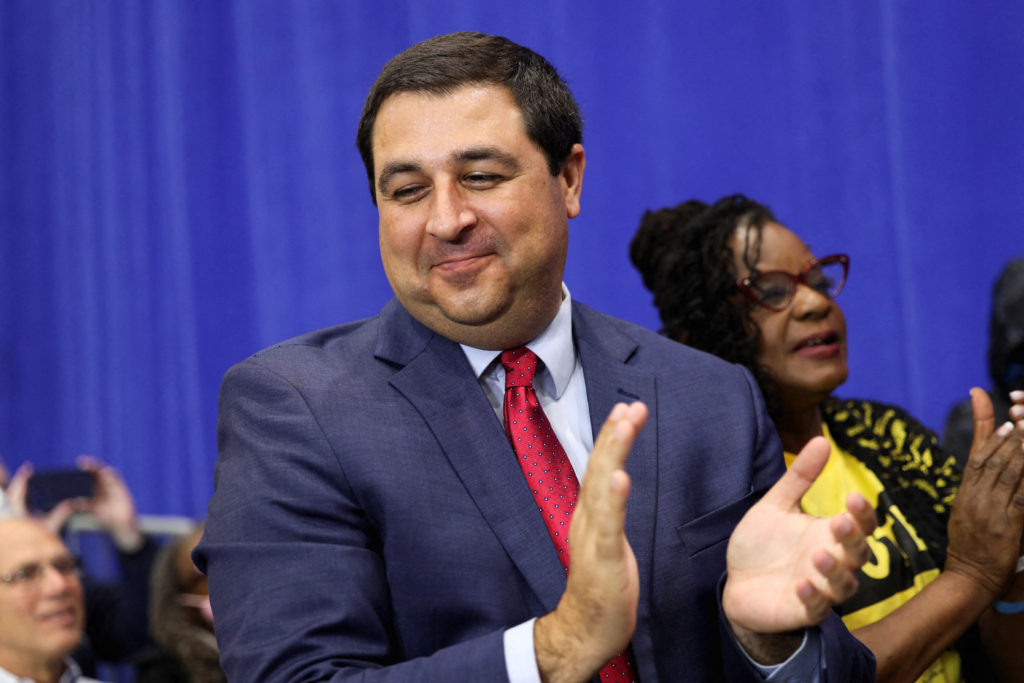
Attorney General Josh Kaul attends a rally with Wisconsin Governor Tony Evers before the mid-term elections in Milwaukee, Wisconsin, U.S. October 29, 2022. REUTERS/Daniel Steinle
The Wisconsin Supreme Court, led by its liberal majority, has struck down the state’s 176-year-old abortion ban, ruling 4-3 that it is superseded by more recent laws regulating the procedure. This decision, announced on Wednesday, marks a significant shift in the state’s legal landscape regarding reproductive rights.
The ruling was anticipated due to the court’s liberal composition. Notably, one justice had previously pledged to uphold abortion rights during her campaign, and the justices had criticized the ban during oral arguments held in November.
Enacted in 1849, the statute was interpreted as a near-total ban on abortions, criminalizing the act for anyone other than the mother or a doctor in a medical emergency. The law was nullified by the U.S. Supreme Court’s 1973 Roe v. Wade decision, which legalized abortion nationwide. However, the statute was never officially repealed, and its status came into question after the U.S. Supreme Court overturned Roe in 2022.
Legal Battle and Rationale
Wisconsin Attorney General Josh Kaul, a Democrat, filed a lawsuit arguing that the abortion restrictions enacted during the Roe era effectively nullified the 1849 ban. He pointed to a 1985 law allowing abortions until fetal viability, generally recognized as around 21 weeks of gestation with medical assistance.
Republican legislators had also passed laws under Roe requiring an ultrasound, a 24-hour waiting period, and written consent for abortions, alongside regulations mandating that doctors administer abortion-inducing drugs in person.
The majority opinion concluded that the comprehensive nature of these laws implied the repeal of the 1849 ban. Justice Rebeca Dallet wrote,
“The legislature impliedly repealed the ban by enacting comprehensive legislation about virtually every aspect of abortion including where, when, and how healthcare providers may lawfully perform abortions.”
Political and Public Reactions
The decision has sparked varied reactions across the political spectrum. Sheboygan County District Attorney Joel Urmanski, a Republican who defended the 1849 ban, argued that it could coexist with newer restrictions. However, Dane County Circuit Judge Diane Schlipper had previously ruled that the ban only applied to non-consensual feticide, not consensual abortions.
Justice Annette Ziegler, in her dissent, criticized the ruling as a “jaw-dropping exercise of judicial will,” accusing the liberal justices of succumbing to personal biases and political pressures.
“Put bluntly, our court has no business usurping the role of the legislature,”
she stated.
Meanwhile, Heather Weininger, Executive Director of Wisconsin Right to Life, expressed disappointment, claiming the ruling represented judicial overreach.
“To assert that a repeal is implied is to legislate from the bench,”
she remarked.
Implications and Future Outlook
The court’s decision provides greater legal certainty for abortion providers and patients in Wisconsin, ensuring that abortions remain accessible under current state laws. This ruling aligns with public sentiment; a 2024 AP VoteCast survey found that 62% of Wisconsin voters believe abortion should be legal in most cases.
Planned Parenthood of Wisconsin had previously sought clarification from the Supreme Court on the constitutionality of the 1849 ban, but the case was dismissed without explanation, further fueling criticism from conservative justices.
Looking ahead, the court’s liberal majority is expected to remain intact until at least 2028, following Susan Crawford’s victory over conservative Brad Schimel for an open seat. Crawford’s presence on the bench is anticipated to influence future decisions on reproductive rights and other contentious issues.
This landmark ruling not only reshapes the legal framework surrounding abortion in Wisconsin but also reflects broader national debates on reproductive rights in the post-Roe era. As the state navigates this new legal terrain, stakeholders on all sides will continue to grapple with the implications of this historic decision.







